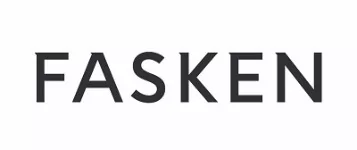- within Employment and HR topic(s)
- with Senior Company Executives, HR and Finance and Tax Executives
- in United Kingdom
- with readers working within the Accounting & Consultancy, Basic Industries and Business & Consumer Services industries
With the coming into force of Order in Council 1154-2025,1 October 1, 2025, marked the end of the interim regime and the beginning of the permanent regime established by the Act to Modernize the Occupational Health and Safety Regime (the "AMOHSR"),2 which was adopted in October 2021. This historic legislation has made significant changes to employer obligations and prevention mechanisms in Québec workplaces, such as through amendments to the Occupational Health and Safety Act("OHSA")3 and the new Regulation respecting prevention and participation mechanisms in an establishment (the "Regulation").4
The reform aims to promote better management of occupational risks, increase worker participation in prevention, and enhance the role of the Commission des normes, de l'équité, de la santé et de la sécurité du travail (the "CNESST"). In accordance with the AMOHSR, prevention obligations vary depending on the number of workers in an establishment. It is therefore essential to have a thorough understanding of the AMOHSR's provisions in order to determine the framework applicable to your organization.
Key Obligations
1. Prevention Program or Action Plan
For establishments with 20 or more workers, it is mandatory to develop, implement and maintain a prevention program. The program must include the identification and analysis of risks to workers' health, such as chemical, biological, physical, ergonomic and psychosocial risks, as well as other risks that may impact their safety. Moreover, it must provide for measures and priorities for action to eliminate these risks or, if that is not possible, to control them. It must also include an inventory of dangerous substances (hazardous materials) and a description of personal protective equipment, as well as provide safety training, information, first aid, etc.
With some exceptions, employers with workers in several establishments engaged in similar activities may develop and implement a single prevention program for some or all of those establishments, including those with fewer than 20 workers. This program must apply over a period of at least three years and take into consideration all the activities carried out in these establishments.
For establishments with fewer than 20 workers, an action plan for occupational health and safety must be implemented. The action plan, although simplified, must include preventive measures similar to those in the prevention program, but adapted to the available resources. In all cases, both the prevention program and the action plan must be updated annually.
2. Occupational Health and Safety Committee (OHS Committee) or Liaison Officer
Under the AMOHSR, establishinga joint OHS committee in establishments of 20 or more workers is mandatory. Notably, the committee must:
- be composed of worker and employer representatives;
- meet at least once every three months;
- actively participate in identifying and analysing risks, as well as developing the prevention program;
- make written recommendations to the employer.
In establishments with fewer than 20 workers, one worker must be appointed as the OHS liaison officer. The officer's role is to ensure that a minimum number of employees participate in prevention initiatives. The officer may also make written recommendations to the employer regarding identified workplace hazards and file complaints with the CNESST.
3. Occupational Health and Safety Representative (OHS Representative)
Another new feature is the obligation to appoint a health and safety representative in establishments with an OHS Committee (20 workers or more). The representative is an ex officio member of the OHS Committee and must, notably:
- be appointed from among the workers;
- collaborate in the development and implementation of the prevention program;
- accompany the inspector during workplace inspections;
- receive notice of incidents and conduct investigations;
- complete mandatory training.
In small businesses (fewer than 20 workers) that don't have an OHS Committee, the CNESST may still require the appointment of an OHS Representative if it considers it advisable to protect workers' health or ensure their safety and physical or mental well-being.
Finally, unless established in an agreement with the OHS Committee, the Regulation prescribes the minimum number of hours a representative must devote to their duties, based on the size and level of the establishment. Moreover, there may be between 1 and 5 representatives, depending on the size of the organization.
Mandatory Training
All OHS Committee members and health and safety representatives must, within 120 days of their appointment, obtain a certificate for at least one day of theoretical training issued by the CNESST. The content and topics of these training courses are set out in the Regulations. Liaison officers have one year following their appointment to participate in a training program, the content and duration of which are determined by the CNESST. Employers are obligated to provide paid leave to these appointed workers so they can complete this training without any loss of salary.
Register of Contaminants and Dangerous Substances
Employers are now required to maintain a register of contaminants and dangerous substances (hazardous materials). The contents of the register, which may include a list of workers exposed to those contaminants or dangerous substances, and the procedure for sending the register to the CNESST, are determined by regulation.
Consequences of Non-Compliance
Inspectors may, if they consider it appropriate, issue a remedial order to an employer and set a deadline for compliance with the new requirements under the AMOHSR. In the event of non-compliance, the fines under the OHSA would be amended as follows:
- First offence: Fine between $1,500 and $3,000
- Second offence: Fine between $3,000 and $6,000
- Subsequent offences: Fine between $6,000 and $12,000
Conclusion and Observations
The coming into force of the permanent regime under the AMOHSR marks a major shift towards a more proactive and participatory culture of prevention. Employers must take immediate steps to ensure that they comply with the new requirements.
Fasken is available to assist you in developing your prevention program or action plan, training your representatives, reviewing your occupational health and safety (OHS) policies, and taking any other measures to ensure compliance with legal requirements.
Footnotes
1 Order in Council 1154-2025, Vol 157, No 37, (2025), G.O. Québec, 10 September 2025, Part II, page 5148, < https:/www.publicationsduquebec.gouv.qc.ca/fileadmin/gazette/pdf_encrypte/lois_reglements/2025F/86393.pdf >
2 An Act to modernize the occupational health and safety regime, SQ 2021, c 27.
3 Act respecting occupational health and safety, CQLR c S-2.1.
4 rder in Council 1155-2025, Vol 157, No 37, (2025), G.O. Québec, 10 September 2025, Part II, page 5159, < https:/www.publicationsduquebec.gouv.qc.ca/fileadmin/gazette/pdf_encrypte/lois_reglements/2025A/107652.pdf;
The content of this article is intended to provide a general guide to the subject matter. Specialist advice should be sought about your specific circumstances.





